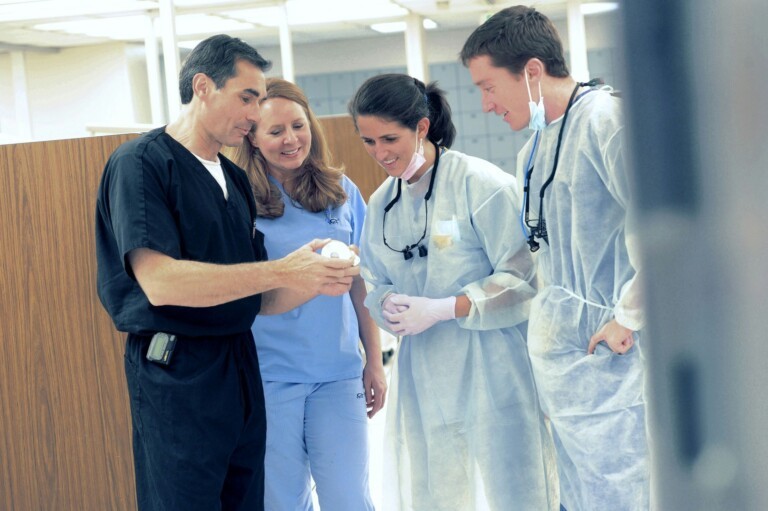Small but mighty.
The University of Alabama at Birmingham is transforming an entire industry through its relentless focus on dental research.
According to a recent article by Melanie Bavaria for Incisal Edge dental lifestyle magazine.
“The University of Alabama at Birmingham’s dental program (an offshoot of the Yellowhammer State’s flagship university in Tuscaloosa) is modest in size. It enrolls 60 or so students every year; the average U.S. dental school enrolls half again as many in each class, according to the most recent figures from the American Dental Education Association.
For the past five years, though, UAB has received more funding, dollar for dollar, from the National Institute of Dental and Craniofacial Research (part of the federal National Institutes of Health) than any dental school in the country. Perhaps more significantly, it’s also home to the National Dental Practice-Based Research Network.”
That organization — known by the equally unwieldy abbreviation NDPBRN — comprises thousands of dental practices across the U.S. that participate in a variety of collaborative research projects. Its mission statement avers that the group “is an effort to help dental professionals directly improve the efficiency and effectiveness of dental care. Essentially, it is research done about and in the ‘real world’ of daily clinical practice.”
Why is this important?
Dental research of all kinds is going on constantly, of course, but there’s often a disconnect between what’s being studied in a lab and what’s of legitimate use in the operatory. A lot of such research, the NDPBRN claims, is “scientifically valid, statistically significant, but clinically useless” — a defect it intends to address. And UAB is the central locale, the proverbial room where it happens.
 Dr. Michael Reddy (shown above, with UAB students), a periodontics specialist who since 2012 has been dean of the UAB School of Dentistry, observes that one additional research roadblock is the vast amount of time it takes new information to affect actual patient outcomes.
Dr. Michael Reddy (shown above, with UAB students), a periodontics specialist who since 2012 has been dean of the UAB School of Dentistry, observes that one additional research roadblock is the vast amount of time it takes new information to affect actual patient outcomes.
“When a scientific discovery is made, some estimate it may be upward of 12 to 18 years before it’s adopted in clinical practice,” he says. “That’s startling. With the [NDPBRN] network, we can go ahead and quickly push information out to these practices that are engaged in the science, but also collect data from them” — a virtuous cycle of rigorous experimentation and results-sharing that offers the possibility of shortening that lab-to-clinic timeline considerably.
Read the full story at: https://viewer.zmags.com/publication/2772c968#/2772c968/28


